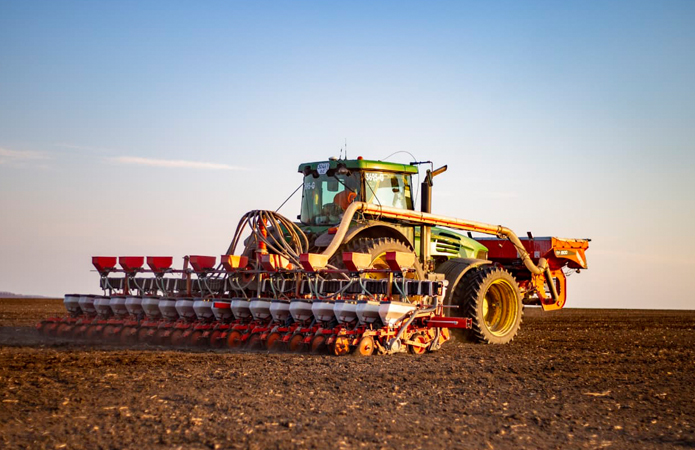Ukrainian farmers short on spring seeding inputs

Ukraine’s farmers do not have the inputs they need to plant their spring crops, says a senior government official.
Taras Dzoba, deputy minister of agrarian policy and food, said the government recently surveyed about 2,500 Ukrainian farmers representing eight million acres of farmland about how things look heading into spring planting.
The results show that growers have an estimated 70 percent of their seed and fertilizer needs, 50 percent of their herbicides but only 20 percent of their fuel requirements.
“Without fuel they cannot do it,” Dzoba said during a recent webinar hosted by The Center for Strategic and International Studies.
He estimated that 20 to 22 million acres of spring-planted crops may get seeded compared to about 37 million acres last year.
“We have a very short window for the spring campaign to be performed,” he said.
“Under these circumstances with the skies full of bombs, it is pretty unclear how to do it.”
Ukraine competes against Canada primarily in wheat and rapeseed markets. Both of those crops were already planted in the winter but they will need fertilizer and pesticides and it will be hard to apply those or harvest the crops with severely limited fuel supplies.
“It’s pretty clear that ahead of us is a huge period of turbulence and uncertainty,” said Dzoba.
Many multinationals have pulled out of the country, shutting down operations at their sunflower seed processing plants.
That will have reverberations around the world because Ukraine is the world’s largest exporter of sunflower oil.
He expects many growers will switch out of sunflower and into spring wheat because instead of relying on the export market they can mill the wheat and use the flour domestically.
A colleague of his said there will also be more peas, barley and oats planted because they are easier to grow and can be used for domestic consumption rather than export.
Livestock farmers can’t get the feed they need because feed manufacturing plants have been damaged.
An estimated 10 percent of Ukraine’s farm workers were doing military service as of the beginning of March. Dzoba thinks the number will be higher now.
Many of the country’s small farm operations are located in the south where the fighting has been fierce. That is an area of the country that was already reeling from the effects of climate change, with big losses in 2019.
“Before the war we had big plans and projects for irrigation in that region,” he said.
And then there is the inability to export the estimated 15 million tonnes of old crop, which is preventing farmers from getting the financing needed to put the new crop in the ground.
“We have a complete blockade of ports and ports accounted for 90 percent of the exports out of Ukraine,” he said.
Ukraine’s former agriculture minister, who just announced his resignation, recently said the country has been exploring the possibility of exporting grain by rail across its western border.
“The zeroing of quotas and restrictions is being worked out with western neighbouring countries in order to supply grain through Moldova and Romania,” said Roman Leshchenko, according to a UkrAgroConsult article.
The grain would then be railed to Black Sea ports in those two countries and shipped to market.
Dzoba doesn’t think that will amount to much. He said the most that could move by rail across Ukraine’s western border is about 300,000 tonnes per month compared to the four to five million tonnes per month that usually moves by ocean vessels during the spring.
Read also
Wheat in Southern Brazil Impacted by Dry Weather and Frosts
Oilseed Industry. Leaders and Strategies in the Times of a Great Change
Black Sea & Danube Region: Oilseed and Vegoil Markets Within Ongoing Transfor...
Serbia. The drought will cause extremely high losses for farmers this year
2023/24 Safrinha Corn in Brazil 91% Harvested
Write to us
Our manager will contact you soon



